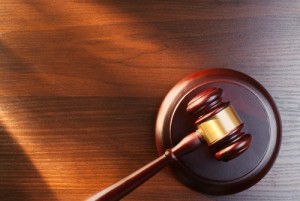The Maryland Court of Appeals rendered an opinion in Ross v. Housing Authority of Baltimore City last Friday that is important not only to Maryland lawyers handling lead paint cases, but to any plaintiffs’ attorney who is putting up an expert at trial. That’s all of us. The plaintiff, in this case, alleged that she had sustained permanent brain damage from lead exposure at two homes in which she spent her childhood. She enlisted the help of an expert witness to establish that the defendant’s building was the source of her exposure and her elevated blood lead levels. After the circuit court granted the defendant’s motion to exclude the expert testimony, the plaintiff appealed.
The circuit court’s decision was based on Maryland Rule 5-702, which reads:
Expert testimony may be admitted, in the form of an opinion or otherwise, if the court determines that the testimony will assist the trier of fact to understand the evidence or to determine a fact in issue. In making that determination, the court shall determine (1) whether the witness is qualified as an expert by knowledge, skill, experience, training, or education, (2) the appropriateness of the expert testimony on the particular subject, and (3) whether a sufficient factual basis exists to support the expert testimony.
The circuit court concluded that the first and third prongs were not satisfied. The circuit court found that the expert, who was a pediatrician, was qualified to testify as an expert on pediatrics and childhood lead-poisoning but did not have the credentials to interpret lead test reports and to answer  questions and give opinions on the meaning and significance of those reports. Regarding the third prong, the only factual basis for the testimony was a single positive test reading from a window sill from the second home.
questions and give opinions on the meaning and significance of those reports. Regarding the third prong, the only factual basis for the testimony was a single positive test reading from a window sill from the second home.
The Court of Appeals agreed with the circuit court. Although the expert was a qualified pediatrician, she was not an epidemiologist or a toxicologist, and she did not know about lead testing. The expert was not trained to identify lead hazards, nor did she have experience identifying causality regarding relative exposure from various sources. The expert gave a general statement of causality that lead from the two homes caused some part of the plaintiff’s elevated blood lead levels, but could not specify how much of that increase was attributed purely to lead from the defendant’s property as opposed to lead from other sources, such as the environment. In addition, the court also agreed that there was no factual support for the testimony.
Finally, the court determined that the testimony would not “assist the trier of fact to understand the evidence or to determine a fact in issue.” The expert not only failed to adequately explain why one of the homes was the source of lead exposure. She also testified that she only identified the risks associated with exposure but relied on the Health Department to find the actual source. In addition, there was evidence showing various other sources of lead exposure in the homes. Because the expert’s opinion ultimately appeared difficult to distinguish from a lay opinion, the court concluded that the testimony would likely confuse rather than assist the jury.
Next, the court examined whether summary judgment was appropriate. Because the expert testimony was excluded, the circuit court granted summary judgment to the defendant because of lack of evidence as to causation. To establish causation, the plaintiff must prove that the defendant’s negligence was a “substantial factor” in causing the plaintiff’s injury. In cases involving exposure to lead, the plaintiff must show a link between the defendant’s property and the lead exposure, a link between the exposure and elevated blood lead levels, and a link between the increased blood lead levels and the plaintiff’s injury. Here, the plaintiff had to establish that the home was a source of lead exposure, that the exposure contributed to her elevated blood lead levels, and that the increase was significant enough to contribute to her injuries. Expert testimony, in this case, was crucial to showing the first link. In particular, the expert testified that the defendant’s property was the source of the plaintiff’s lead exposure.
However, the court stated that even if expert testimony was not available, causation could still be determined using circumstantial evidence. The plaintiff only needs to have evidence that “amounts to a reasonable likelihood or probability rather than a possibility.” Although the plaintiff could no longer use the expert testimony to establish the three links, she could still rely on circumstantial evidence such as the lead investigation reports and other discovery materials. As a result, the court concluded that summary judgment was not appropriate and remanded the case for further review.
You can read the full opinion here.
 Maryland Injury Law Center
Maryland Injury Law Center

